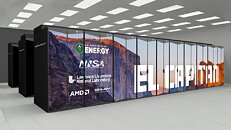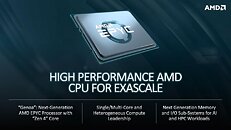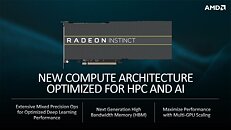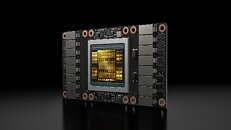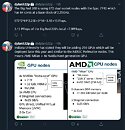
NVIDIA and HPE Join Forces to Construct Advanced Supercomputer in Germany
NVIDIA and Hewlett Packard Enterprise announced Tuesday at a supercomputing conference in Hamburg their partnership with Germany's Leibniz Supercomputing Centre to build a new supercomputer called Blue Lion which will deliver approximately 30 times more computing power than the current SuperMUC-NG system. The Blue Lion supercomputer will run on NVIDIA's upcoming Vera Rubin architecture. This setup combines the Rubin GPU with NVIDIA's first custom CPU Vera. The integrated system aims to unite simulation, data processing, and AI into one high-bandwidth low-latency platform. Optimized to support scientific research it boasts shared memory coherent compute abilities, and in-network acceleration.
HPE will build the system using its next-gen Cray technology by including NVIDIA GPUs along with cutting-edge storage and interconnect systems. The Blue Lion supercomputer will use HPE's 100% fanless direct liquid-cooling setup. This design circulates warm water through pipes for efficient cooling while the generated system's heat output will be reused to warm buildings nearby. The Blue Lion project comes after NVIDIA said Lawrence Berkeley National Lab in the US will also set up a Vera Rubin-powered system called Doudna next year. Scientists will have access to the Blue Lion supercomputer beginning in early 2027. The Blue Lion supercomputer, based in Germany will be utilized by researchers working on climate, physics, and machine learning. In contrast, Doudna, the U.S. Department of Energy's next supercomputer, will get its data from telescopes, genome sequencers, and fusion experiments.
HPE will build the system using its next-gen Cray technology by including NVIDIA GPUs along with cutting-edge storage and interconnect systems. The Blue Lion supercomputer will use HPE's 100% fanless direct liquid-cooling setup. This design circulates warm water through pipes for efficient cooling while the generated system's heat output will be reused to warm buildings nearby. The Blue Lion project comes after NVIDIA said Lawrence Berkeley National Lab in the US will also set up a Vera Rubin-powered system called Doudna next year. Scientists will have access to the Blue Lion supercomputer beginning in early 2027. The Blue Lion supercomputer, based in Germany will be utilized by researchers working on climate, physics, and machine learning. In contrast, Doudna, the U.S. Department of Energy's next supercomputer, will get its data from telescopes, genome sequencers, and fusion experiments.

























